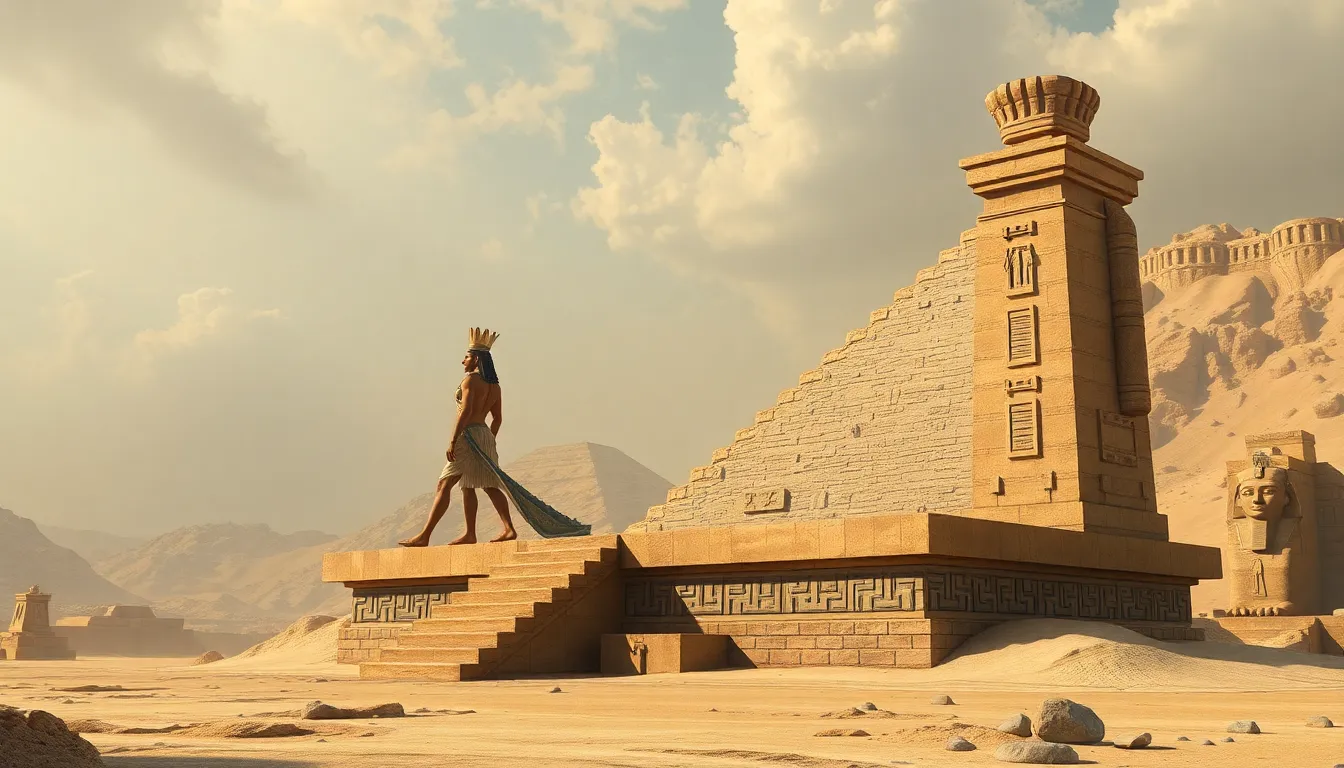The Divine Balance: How Hierarchy Influenced Egyptian Beliefs
I. Introduction
Hierarchy in ancient Egyptian society was a fundamental aspect that shaped its culture, governance, and religious practices. This social structure defined the roles of individuals and established a clear order that extended into the spiritual realm. The significance of divine balance, often embodied in the concept of Ma’at, was central to Egyptian beliefs, influencing everything from daily life to the afterlife.
The purpose of this article is to explore the interplay between hierarchy and religious beliefs in ancient Egypt, shedding light on how these elements were intertwined in the civilization’s worldview.
II. The Structure of Egyptian Society
The ancient Egyptian society was characterized by a rigid social structure that consisted of several classes, each with defined roles and responsibilities. The main classes included:
- Pharaoh: The supreme ruler considered a god on earth, responsible for maintaining Ma’at.
- Nobility: Includes high-ranking officials and the wealthy, who assisted the Pharaoh in governance.
- Priests: Religious leaders who performed rituals and maintained temples, acting as intermediaries between the gods and the people.
- Artisans and Merchants: Skilled workers and traders who contributed to the economy.
- Farmers and Laborers: The backbone of the economy, working the land and providing food.
The Pharaoh, as the divine ruler, was seen as the embodiment of the state and divine order. His authority was believed to be sanctioned by the gods, and he was responsible for upholding Ma’at, ensuring harmony and balance within society.
Priests and religious leaders played a crucial role in maintaining societal order, conducting rituals, and managing the wealth of temples, which were central to both religious and economic life.
III. Divine Order and Ma’at
Ma’at, a central concept in Egyptian cosmology, represented truth, balance, order, and justice. It was both a principle and a goddess, symbolizing the ideal state of the universe. The importance of Ma’at cannot be overstated; it was believed that the stability of the cosmos depended on its maintenance.
The relationship between Ma’at and social hierarchy was profound. The Pharaoh’s duty was to embody Ma’at, and through his actions, he ensured that the social order was preserved. This divine order was reflected in:
- The governance of the state.
- The conduct of individuals in their daily lives.
- The treatment of the deceased in funerary practices.
Ma’at was not merely a concept; it influenced laws and ethical standards, guiding Egyptians in their interactions with one another and their relationships with the divine.
IV. The Pantheon of Egyptian Gods
The ancient Egyptians worshipped a vast pantheon of gods, each with distinct roles that mirrored the hierarchical structure of society. Major deities included:
- Ra: The sun god and creator, symbolizing kingship and order.
- Osiris: God of the afterlife and resurrection, representing the cycle of life and death.
- Isis: Goddess of magic and motherhood, embodying nurturing and protection.
- Horus: The sky god, often depicted as a falcon, symbolizing kingship and protection.
The relationships between these gods were often hierarchical, reflecting human societal structures. For instance, Osiris was revered as the ruler of the underworld, while Ra was seen as the king of the gods. This divine order not only represented the cosmos but also reinforced the social norms of ancient Egyptian life.
V. The Afterlife and Hierarchical Beliefs
The concept of the afterlife held significant importance in ancient Egyptian religion. It was believed that one’s social status during life directly impacted their experience in the afterlife. Key aspects included:
- Judgment: Upon death, the deceased would undergo a judgment by Osiris, where their heart would be weighed against the feather of Ma’at.
- Social Status: The higher one’s status, the better their chances of a favorable judgment and a blessed afterlife.
- Burial Practices: Elaborate tombs and burial rituals were reserved for the elite, reflecting their societal rank.
Hierarchical beliefs were evident in the construction of tombs and the types of goods buried with individuals, indicating their social standing and the importance placed on the afterlife.
VI. Art and Symbolism in Hierarchical Representation
Art in ancient Egypt served as a powerful medium for depicting social hierarchy and divine order. It played a crucial role in reinforcing societal beliefs and values. Key points include:
- Depictions of Pharaohs: Pharaohs were often portrayed larger than life in art, emphasizing their divine status.
- Iconography of Gods: Gods were depicted in specific forms that reflected their attributes and societal roles, reinforcing their hierarchical positions.
- Symbolism: Common symbols, such as the ankh (symbol of life) and the crook and flail (symbols of kingship), were used to communicate power and divine authority.
Through art and iconography, the Egyptians conveyed their beliefs about the divine order and the importance of maintaining it in both life and death.
VII. The Legacy of Hierarchical Beliefs in Modern Egypt
The legacy of ancient Egyptian hierarchical beliefs continues to influence contemporary society. Key points of continuation include:
- Social Structures: Modern Egypt still exhibits social stratification, with distinct classes in society.
- Cultural Identity: Ancient beliefs have shaped modern Egyptian culture, including religious practices and festivals.
- Religious Practices: Some aspects of ancient worship and reverence for the divine continue in Islamic practices, reflecting a historical continuity.
The impact of historical hierarchy on current beliefs remains significant, providing a rich context for understanding modern Egyptian identity.
VIII. Conclusion
In conclusion, the interplay between hierarchy and Egyptian beliefs reveals the depth of ancient Egyptian culture. The significance of divine balance, encapsulated in the concept of Ma’at, was paramount in shaping their society, governance, and religious practices.
Understanding this relationship offers insights into the values and practices of ancient Egypt, underscoring the importance of hierarchy in their worldview. As we explore the influences of hierarchy in other ancient civilizations, we can gain a comprehensive understanding of the diverse ways societies have structured themselves and their beliefs.




